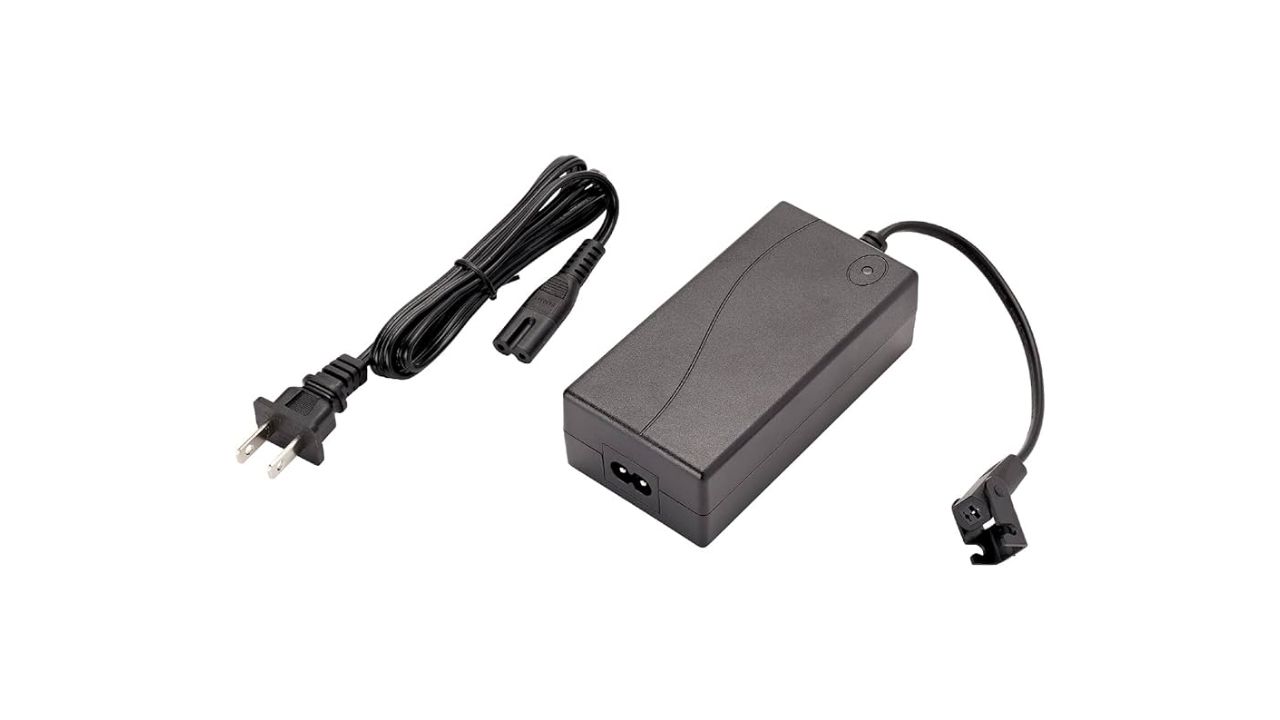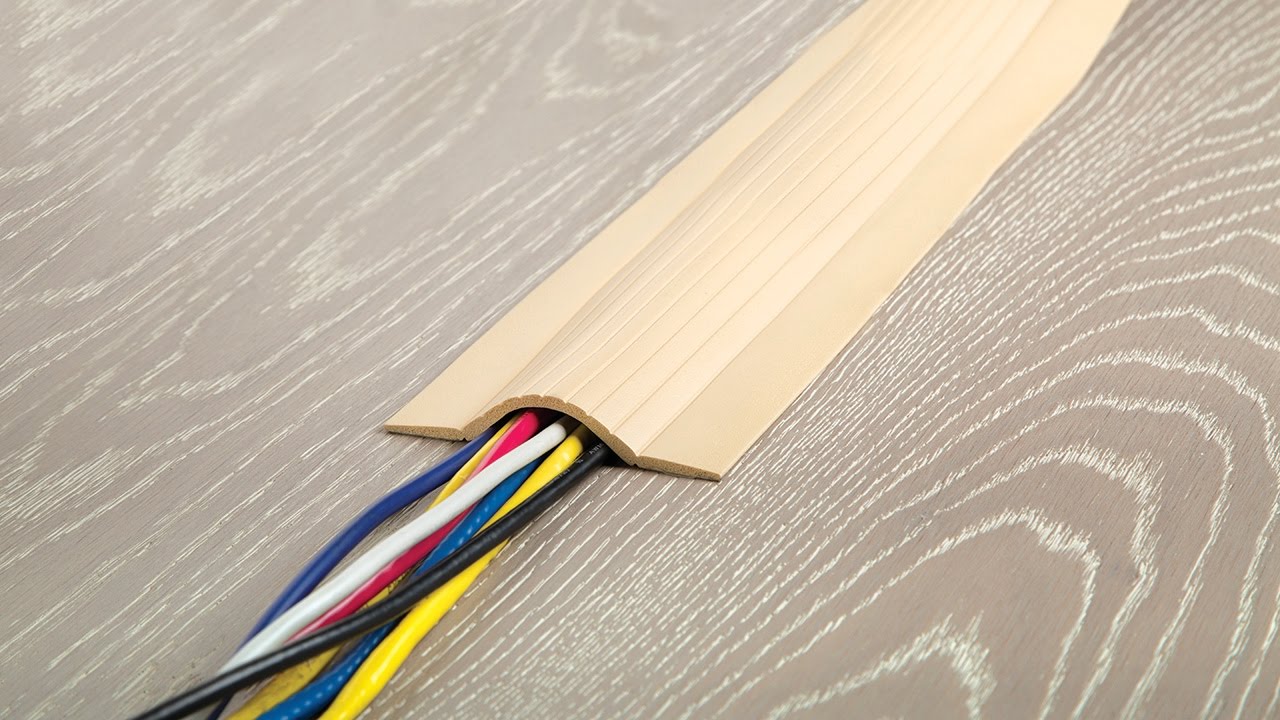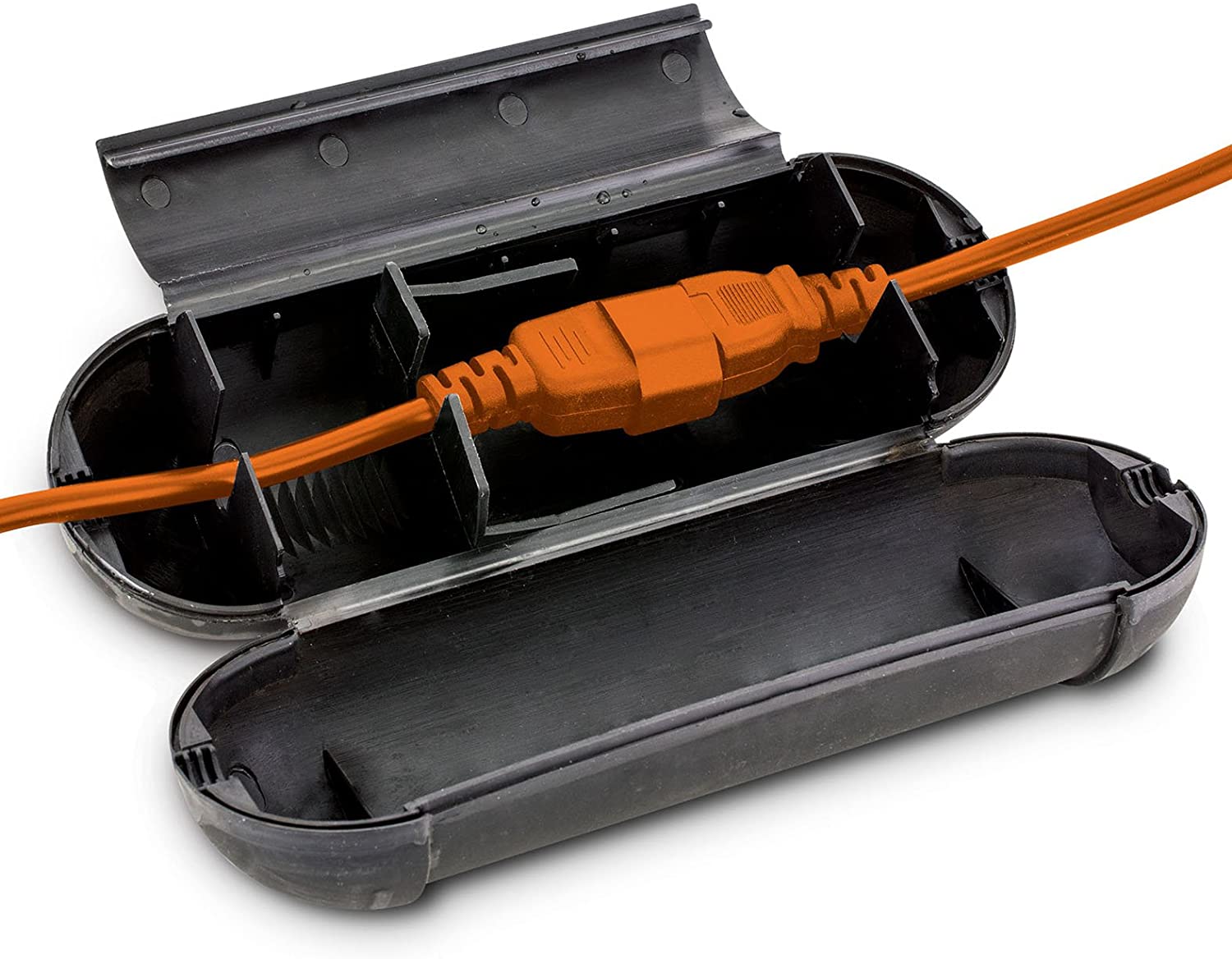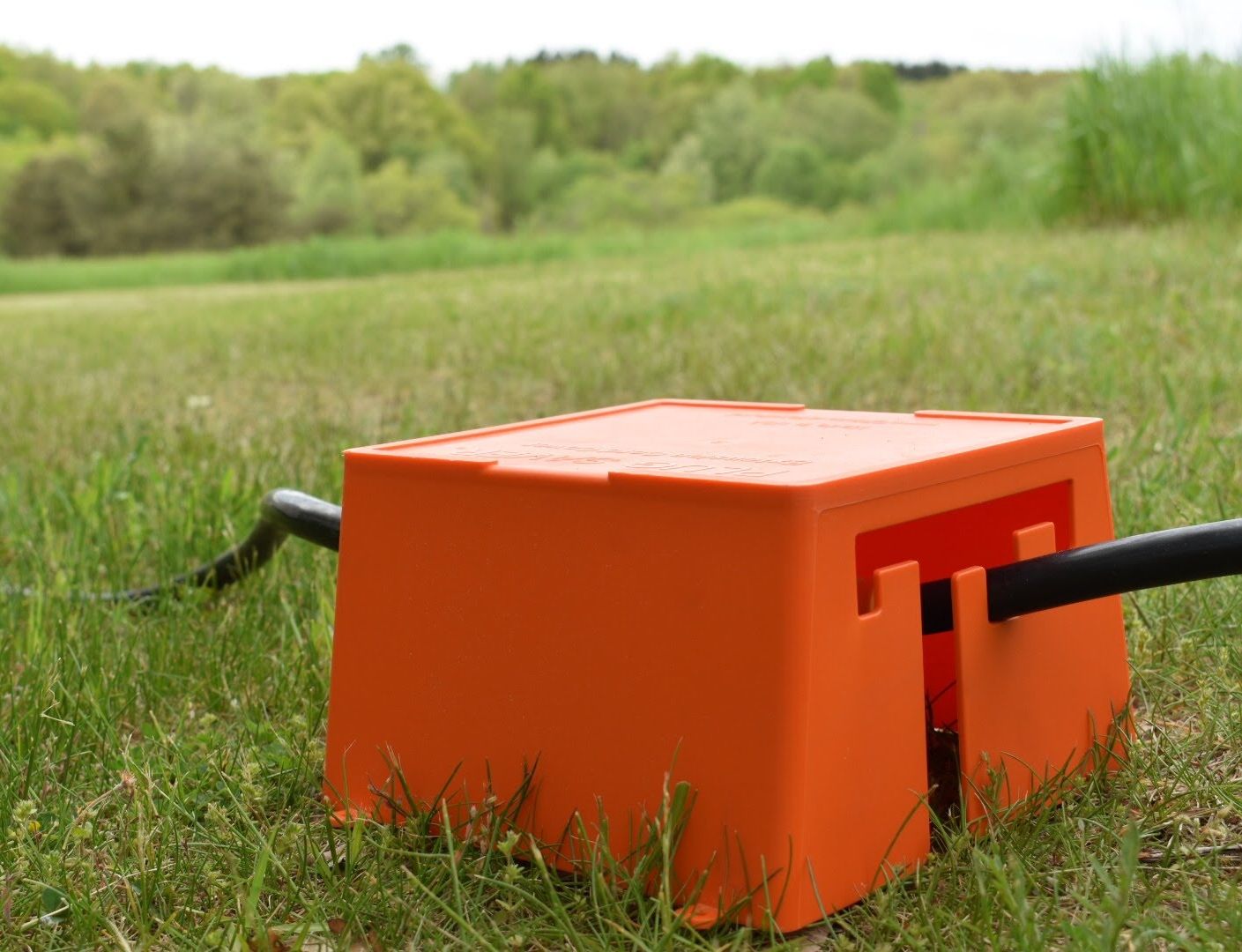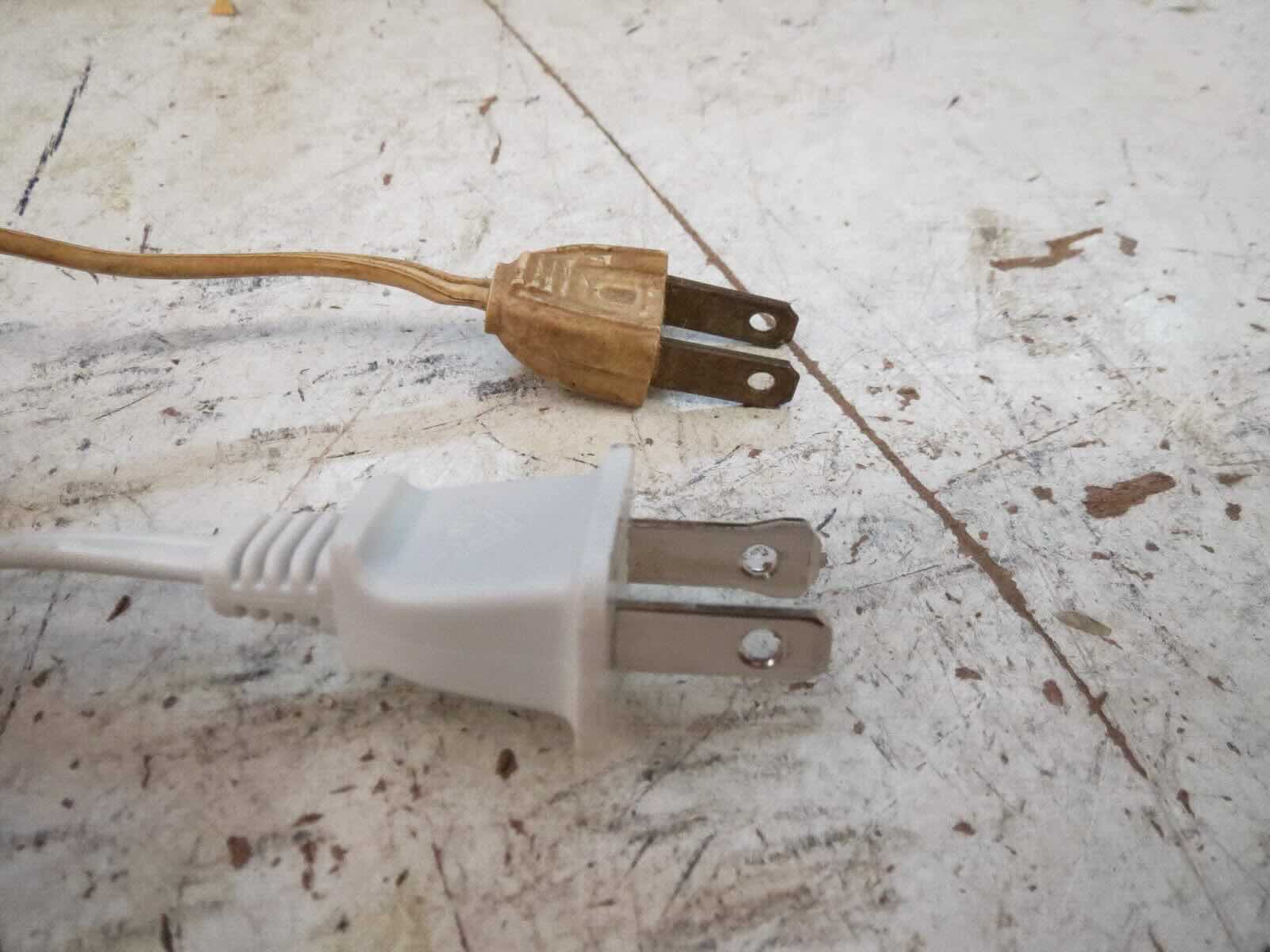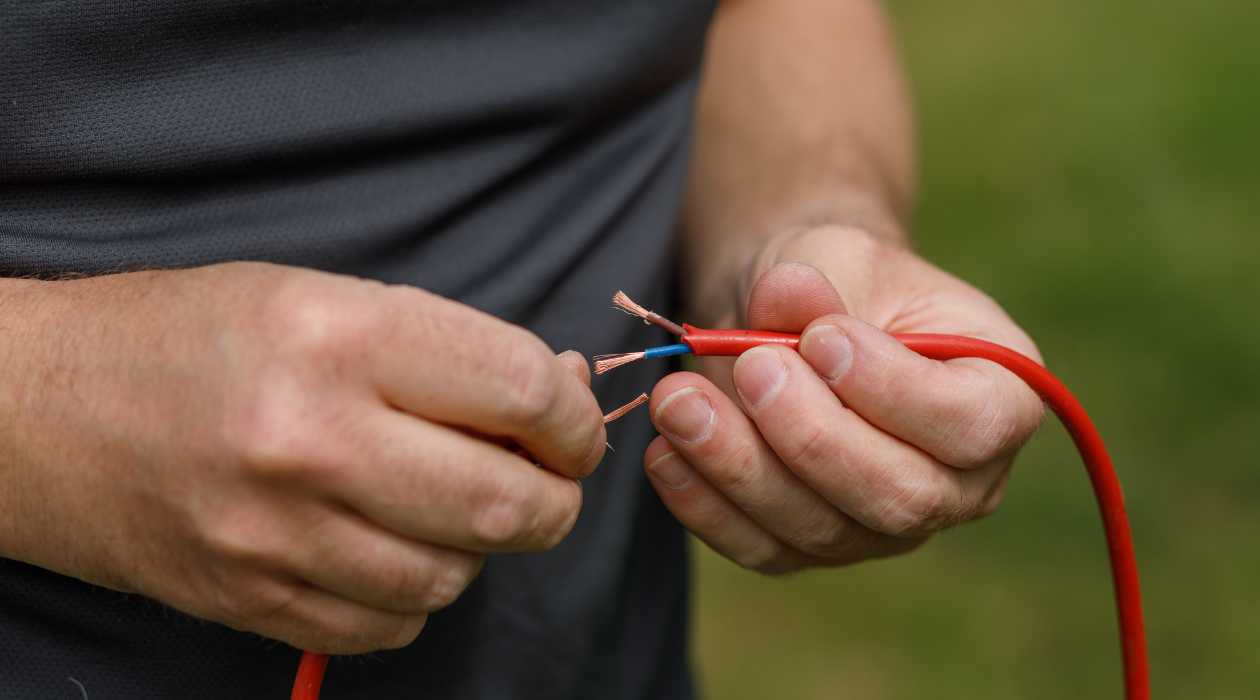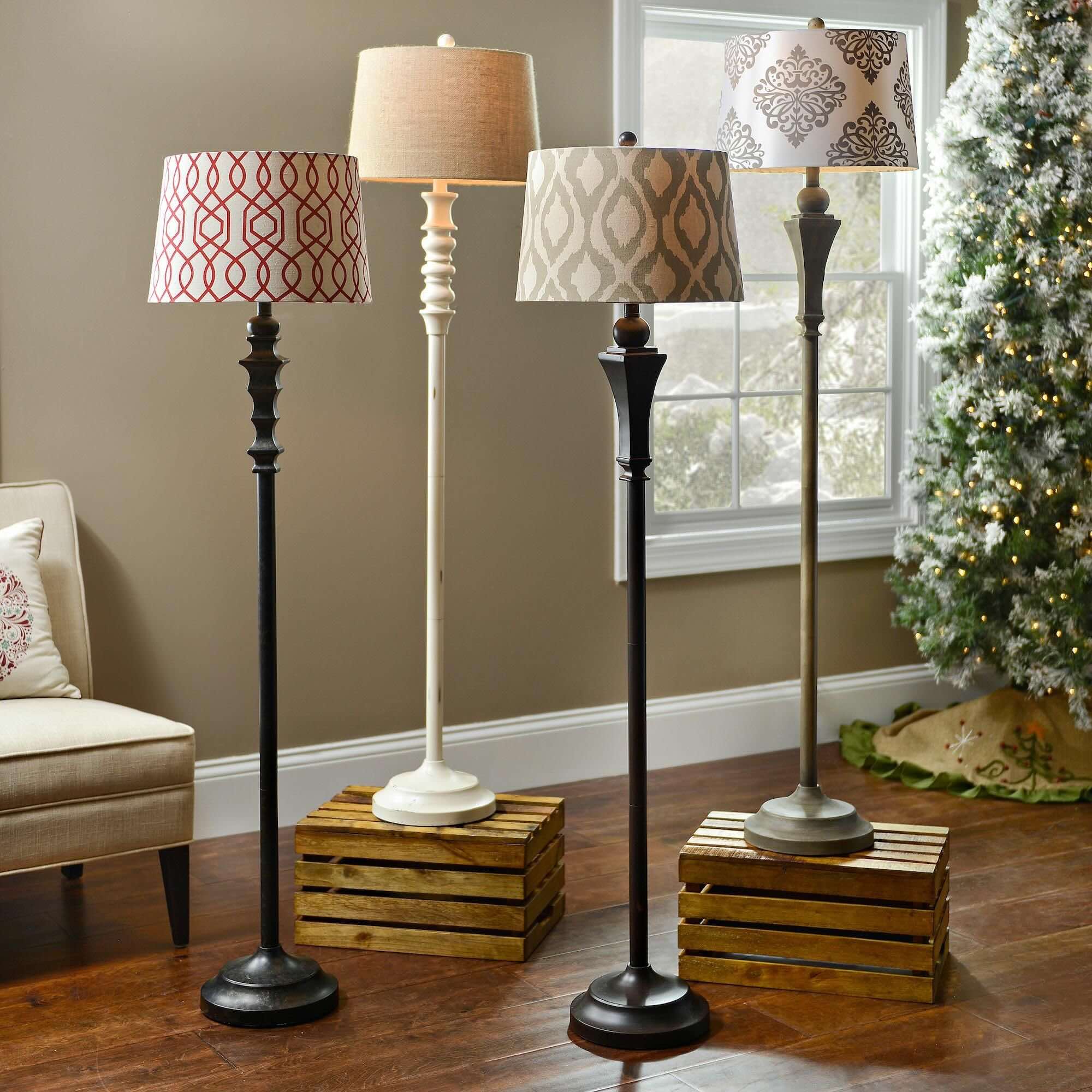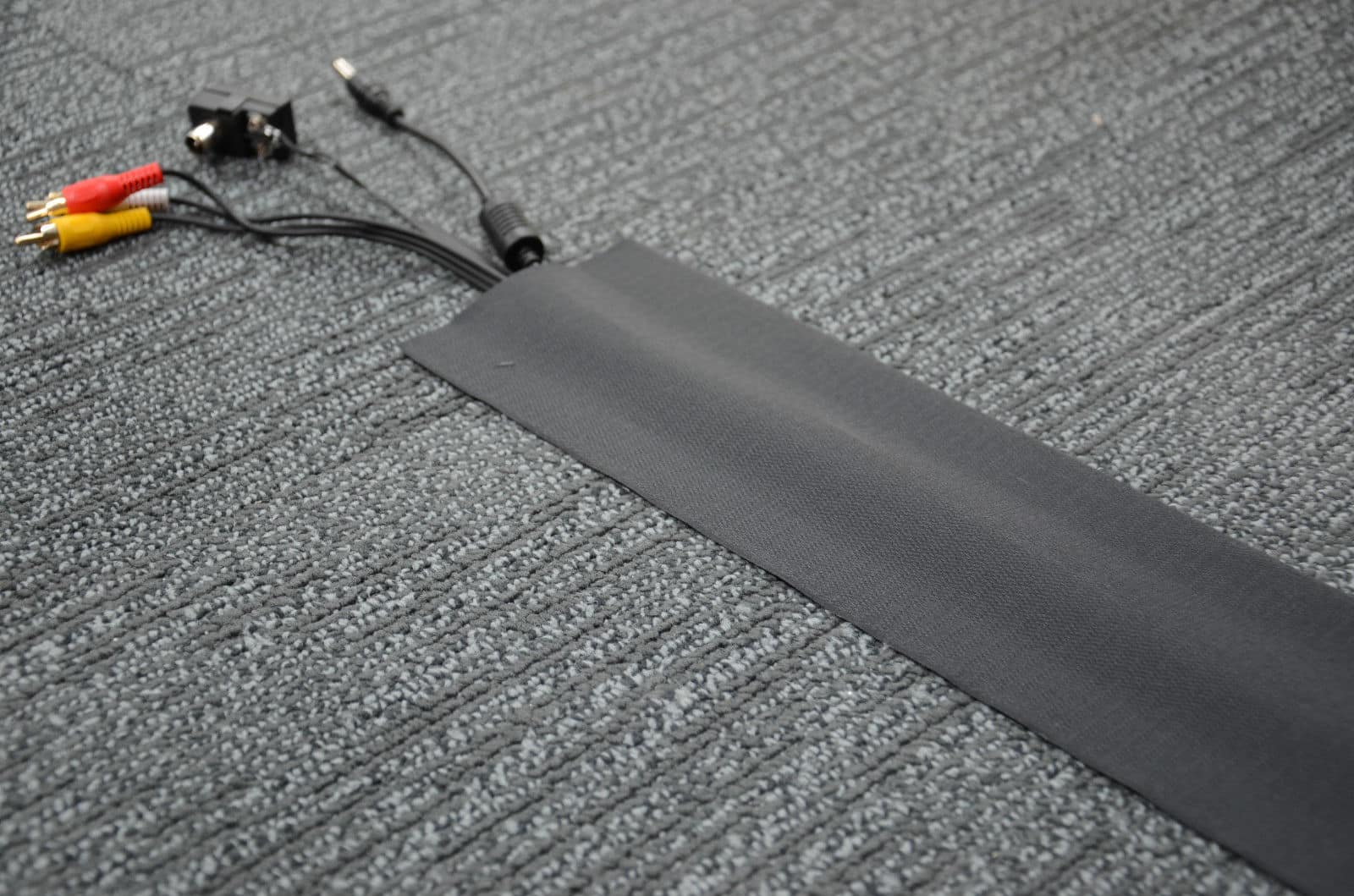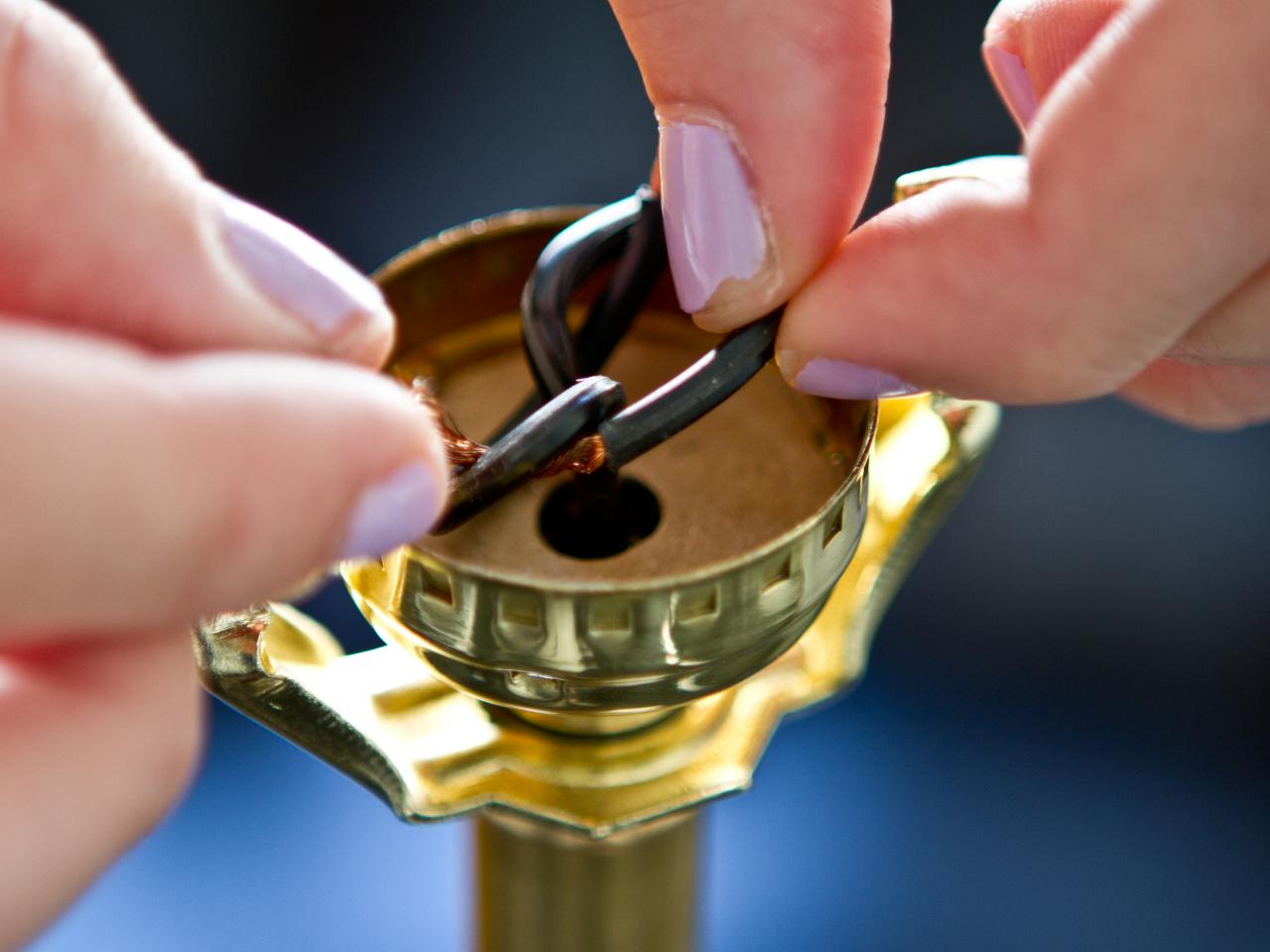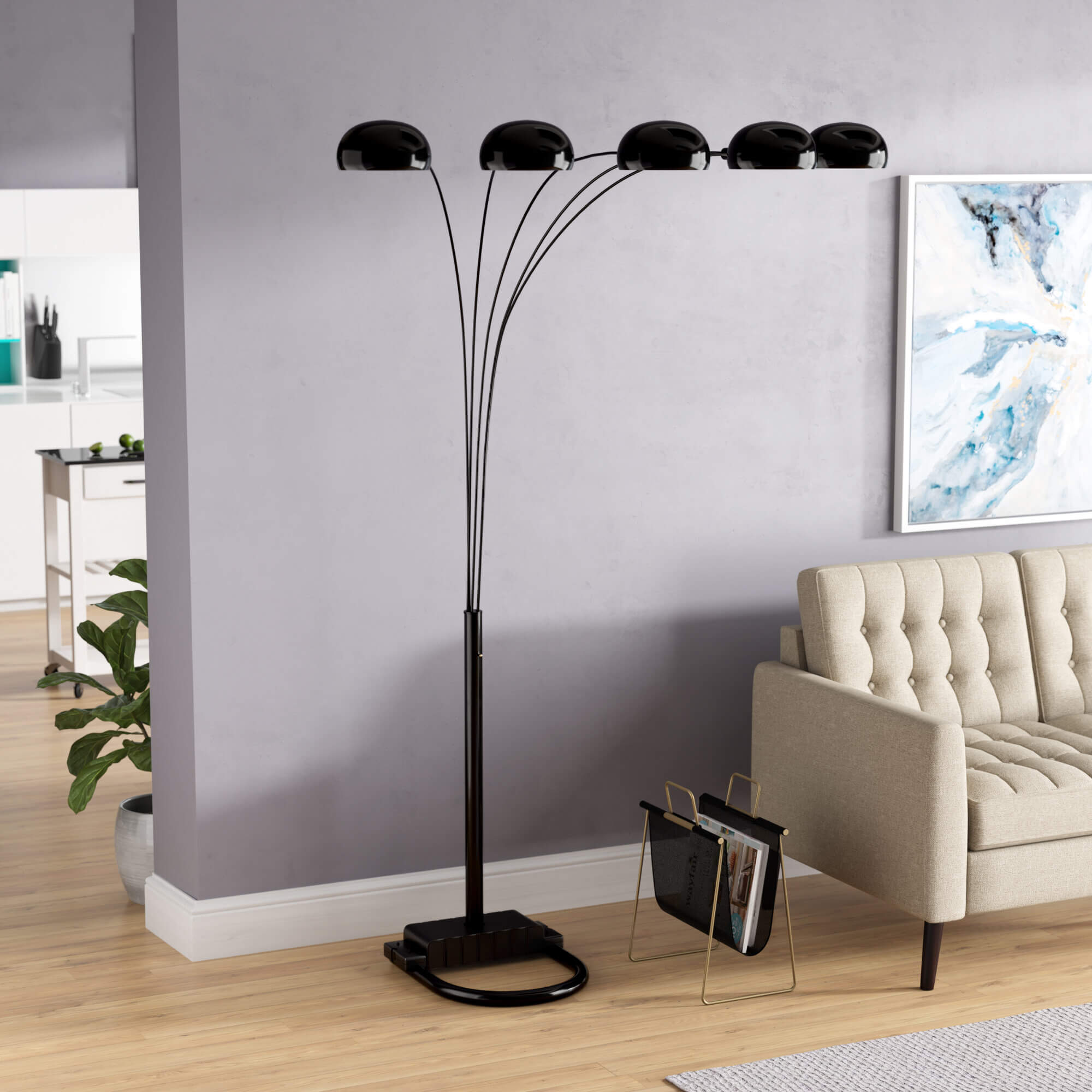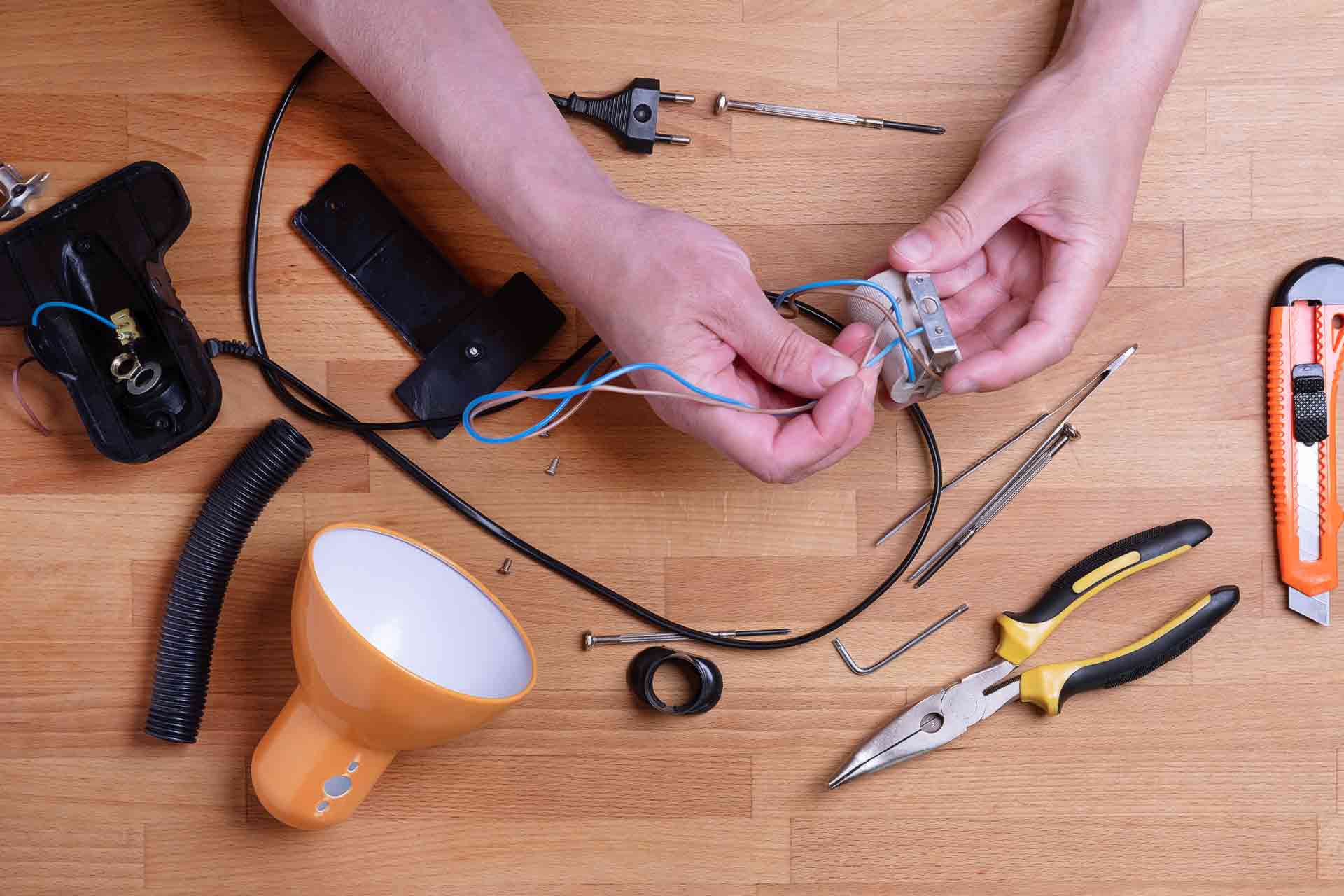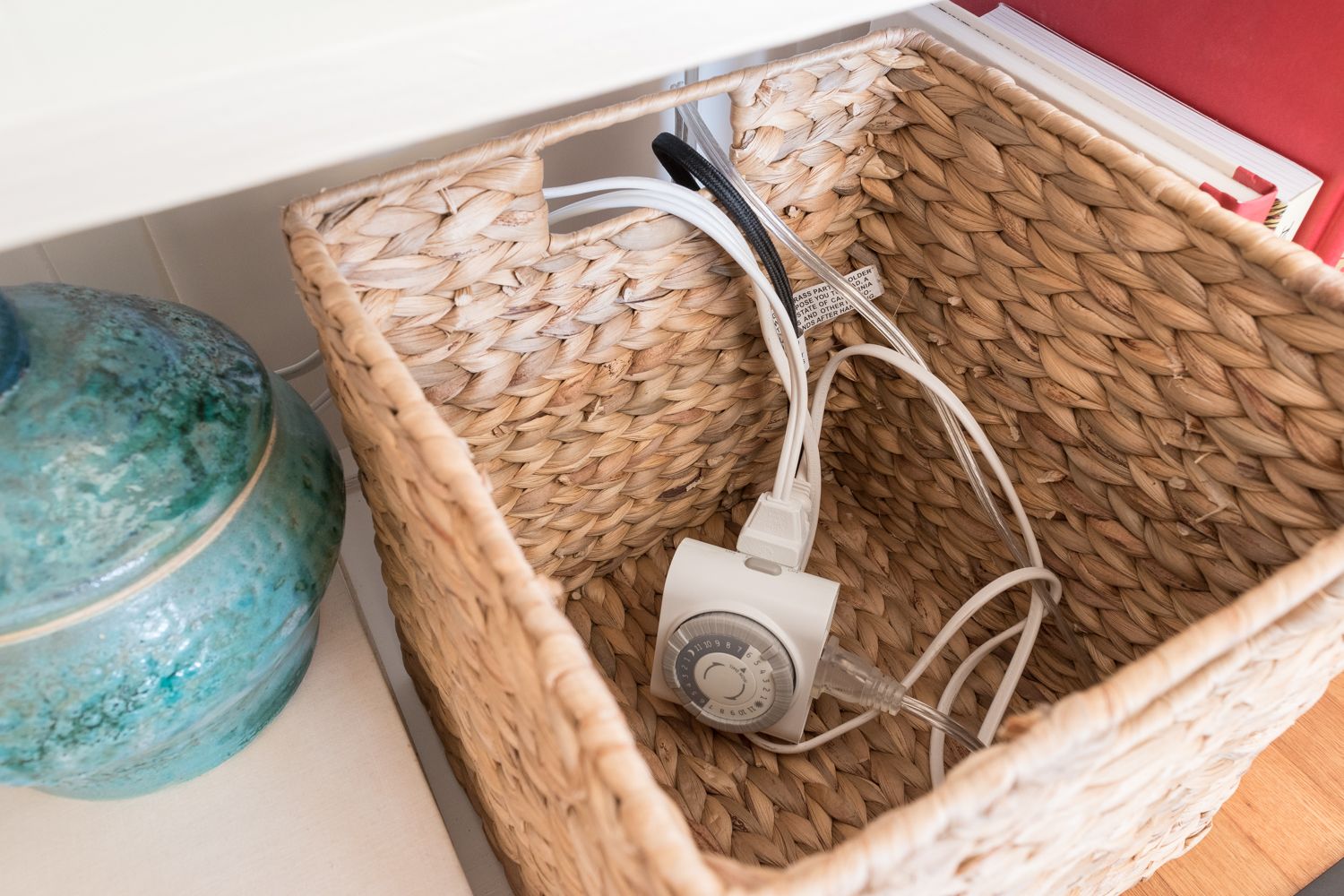

Furniture
How To Hide Lamp Cords On The Floor
Modified: February 23, 2024
Learn how to hide lamp cords on the floor with clever furniture solutions. Say goodbye to unsightly cords and create a clean, organized look in your home.
(Many of the links in this article redirect to a specific reviewed product. Your purchase of these products through affiliate links helps to generate commission for Storables.com, at no extra cost. Learn more)
Introduction
When it comes to creating a clean and organized living space, the last thing you want is unsightly lamp cords cluttering up your floor. Not only can exposed cords be a tripping hazard, but they can also detract from the overall aesthetic appeal of your room. Luckily, there are several effective methods for hiding lamp cords on the floor, allowing you to maintain a tidy and safe environment while still enjoying the illumination your lamps provide.
In this article, we will guide you through the step-by-step process of concealing lamp cords on the floor. Whether you prefer a quick and temporary solution or a more permanent fix, we have got you covered. From cord covers and cable raceways to wire channels and clever furniture placement, we will explore a variety of options that will suit your specific needs and style.
Before diving into the various hiding methods, it is important to take a moment to consider a few key factors. Firstly, safety should always be a top priority. Ensure that any cord hiding solution you choose does not pose a fire hazard or compromise the integrity of the cords. Additionally, convenience plays a role in your decision-making process. If you frequently need to access and move your lamps, you may want to opt for solutions that allow for easy access and adjustments.
Now that we have set the stage, let us move on to the first step in hiding lamp cords on the floor: determining the best hiding method.
Key Takeaways:
- Say goodbye to unsightly lamp cords cluttering your floor with these creative and versatile hiding methods, ensuring a clean, safe, and visually appealing living space.
- From temporary solutions like cord covers to more permanent options like in-floor cord management, you can easily achieve a clutter-free look while maintaining the beauty and functionality of your lamps.
Read more: How To Hide An Extension Cord
Step 1: Determining the best hiding method
When it comes to hiding lamp cords on the floor, there are several options to choose from. Assessing these options and considering safety and convenience factors will help you determine the best hiding method for your needs.
The first step is to assess the available options. Here are a few common methods for hiding lamp cords on the floor:
- Cord covers: Cord covers are an excellent choice for temporary cord hiding. These flexible tubes are designed to encase cords and can be easily opened and closed. Cord covers are available in various sizes, colors, and materials to match your decor.
- Cable raceways: Cable raceways are plastic or metal channels that can be mounted on the floor to hide cords. They usually feature a hinged cover that allows for easy access to the cords when necessary. Cable raceways come in different shapes and sizes to accommodate different cord configurations.
- Wire channels: Wire channels are similar to cable raceways but are generally smaller and less obtrusive. They are designed to fit flush against the floor and can be painted to blend in seamlessly with your flooring. Wire channels are perfect for concealing cords in high-traffic areas.
- Concealing under rugs or carpets: If you have rugs or carpets in your room, you can utilize them to hide lamp cords. By placing the cords underneath the edges of the rugs or carpets, you can effectively conceal them while maintaining a clean and uncluttered appearance.
- Drilling holes for in-floor cord management: For a more permanent solution, you can consider drilling holes in your flooring to run the lamp cords. This option requires careful planning and should only be attempted if you are comfortable with drilling and have access to the underside of the floor.
- Installing a floor cord protector: Floor cord protectors are rigid or flexible tubes that are designed to protect cords from damage while also hiding them. They can be placed directly on the floor and have multiple channels to accommodate different cords.
- Hiding cords using furniture and decor: Another creative option is to strategically place furniture and decor items to hide lamp cords. By rearranging your furniture or using decorative elements such as plants or curtains, you can effectively conceal the cords in plain sight.
Once you have identified the available options, the next step is to consider safety and convenience factors. Safety is paramount when it comes to hiding lamp cords on the floor. Ensure that the hiding method you choose does not pose any fire hazards and does not compromise the integrity of the cords. Additionally, consider the convenience of the solution. Depending on your needs, you may want a method that allows for easy access to the cords or one that is more permanent and requires less maintenance.
By carefully assessing the available options and considering safety and convenience factors, you can determine the best hiding method for your lamp cords on the floor. In the next steps, we will delve into the specific details of each method to guide you through the installation and provide tips for achieving optimal results.
Step 2: Using cord covers
If you’re looking for a quick and temporary solution to hide lamp cords on the floor, cord covers are an ideal choice. Cord covers are flexible tubes designed to encase cords and protect them from damage while seamlessly blending with your decor.
To effectively use cord covers, follow these steps:
- Selecting the right cord cover: Start by choosing a cord cover that matches your desired aesthetic and can accommodate the size and number of cords you need to hide. Cord covers are available in various sizes and materials, such as plastic or fabric, so ensure you select one that suits your needs.
- Measuring and cutting the cord cover: Next, measure the length of the cords you want to cover. Add a few extra inches to allow for flexibility and easy installation. Use a sharp pair of scissors or a utility knife to cut the cord cover to the required length.
- Installing the cord cover: Once you have the cord cover cut to size, uncoil it and open it up. Place the cords inside the tube, making sure they are fully enclosed and not hanging out. Close the cord cover by fastening the ends together, either using adhesive strips provided with the cord cover or by interlocking the ends.
When installing the cord cover, be mindful of safety and convenience. Ensure that the cords are not squeezed tightly within the cover as this may cause damage or overheating. If you have a lot of cords to hide, consider using separate cord covers for each set of cords to prevent overcrowding and tangling.
Keep in mind that cord covers are a temporary solution and may need to be readjusted or replaced over time. However, they offer a quick and effective way to hide lamp cords on the floor while maintaining a neat and organized look.
In the next step, we will explore the use of cable raceways as another option for hiding lamp cords on the floor.
Step 3: Utilizing cable raceways
If you’re looking for a more durable and permanent solution to hide lamp cords on the floor, cable raceways are an excellent option. Cable raceways are plastic or metal channels that can be mounted on the floor surface to conceal cords while providing easy access when needed.
To effectively utilize cable raceways, follow these steps:
- Choosing the appropriate cable raceway: Start by selecting a cable raceway that is suitable for your needs. Consider the number of cords you need to hide and ensure that the raceway has enough capacity to accommodate them. Cable raceways are available in various sizes and styles, so choose one that matches your decor and provides the desired functionality.
- Preparing the floor surface: Before installing the cable raceway, it’s important to prepare the floor surface. Ensure that the area where you plan to install the raceway is clean, dry, and free from any debris. If necessary, you can wipe the floor with a damp cloth to remove any dirt or dust that may interfere with the adhesion of the raceway.
- Installing the cable raceway: Once the floor surface is ready, carefully measure and mark the desired placement of the cable raceway. Use a level to ensure the raceway will be installed evenly. Depending on the type of raceway you have, you may need to use adhesive backing or screws to secure it in place. Follow the manufacturer’s instructions for installation and make sure the raceway is firmly attached to the floor.
When installing the cable raceway, consider routing the cords inside the channel in an organized and neat manner. This will prevent tripping hazards and make it easier to access the cords when necessary. You can use cable ties or clips to secure the cords within the raceway and prevent them from tangling or shifting.
Cable raceways provide a long-lasting solution for hiding lamp cords on the floor. They are particularly useful in high-traffic areas where cords may be more prone to damage or disturbance. By utilizing cable raceways, you can achieve a clean and professional look while ensuring the safety and organization of your living space.
In the next step, we will explore the option of using wire channels to hide lamp cords on the floor.
Step 4: Employing wire channels
If you’re looking for a discreet and low-profile solution to hide lamp cords on the floor, wire channels are a perfect choice. Wire channels are small, narrow channels that can be flush-mounted to the floor, allowing you to conceal cords while minimizing their visibility.
To effectively employ wire channels, follow these steps:
- Evaluating different wire channel options: Start by exploring the various wire channel options available. Consider the material, size, and design that will best suit your needs and blend seamlessly with your floor. Wire channels are typically available in plastic or metal and come in a range of colors and finishes.
- Measuring and cutting the wire channel: Before installing the wire channel, measure the length of the cords you want to hide and cut the wire channel to the appropriate size. Use a hacksaw or a similar tool to ensure a clean and precise cut.
- Installing the wire channel: Once the wire channel is cut to size, place it in the desired location on the floor. Use a level to ensure it is straight and even. Depending on the type of wire channel you have, it may come with adhesive backing or require screws for installation. Follow the manufacturer’s instructions to securely attach the wire channel to the floor.
When installing the wire channel, take care to route the cords inside the channel in an organized and neat manner. This will prevent tripping hazards and make it easier to access the cords when needed. You can use cable ties or clips to secure the cords within the wire channel and keep them in place.
Wire channels provide a subtle and seamless solution for hiding lamp cords on the floor. They are particularly effective in areas where cords need to be barely noticeable, such as hallways or high-traffic zones. By employing wire channels, you can achieve a clean and minimalist look while keeping your living space free from clutter and hazards.
In the next step, we will explore the option of concealing lamp cords under rugs or carpets.
Use adhesive cord clips to secure the cords along the baseboards or under rugs. You can also use a cord cover or hide them behind furniture or curtains.
Read more: How To Hide Electrical Cord On Wall
Step 5: Concealing cords under rugs or carpets
If you’re looking for a simple and versatile solution to hide lamp cords on the floor, concealing them under rugs or carpets is an effective option. This method not only hides the cords but also adds an element of style and functionality to your living space.
To effectively conceal cords under rugs or carpets, follow these steps:
- Selecting suitable rugs or carpets: Start by selecting rugs or carpets that are suitable for your room and decor. Choose options with a low pile or flatweave style, as they will make it easier to secure the cords underneath. Additionally, consider the size and shape of the rug or carpet to ensure it covers the area where the cords need to be hidden.
- Securing cords underneath: Before laying down the rug or carpet, gather the lamp cords together and secure them using cable ties or Velcro straps. Make sure the cords are neatly bundled and not tangled to avoid any issues. Additionally, consider using cord clips or adhesive hooks to secure the cords to the floor, ensuring they stay in place when the rug or carpet is moved or lifted.
- Concealing cords effectively: Once the cords are secure, lay the rug or carpet over them. Position the rug or carpet so that it covers the cords completely and hides them from view. Adjust the positioning as needed to ensure a seamless appearance.
When concealing cords under rugs or carpets, it’s important to prioritize safety. Avoid placing flammable materials, such as rugs with rubber backing, over electrical cords. Ensure that the cords and any connections are in good condition and not damaged or frayed. Regularly check and maintain the cords to prevent any safety hazards.
Concealing cords under rugs or carpets offers a versatile and customizable solution. It allows you to easily rearrange your living space without the constraints of fixed cord management systems. Additionally, it adds warmth and comfort to your room while effectively hiding unsightly cords.
In the next step, we will explore the option of drilling holes for in-floor cord management.
Step 6: Drilling holes for in-floor cord management
If you’re looking for a more permanent and discreet solution to hide lamp cords on the floor, drilling holes for in-floor cord management is a great option. This method allows you to route the cords underneath the floor surface, keeping them completely out of sight and minimizing tripping hazards.
To effectively drill holes for in-floor cord management, follow these steps:
- Identifying the ideal spots for drilling: Start by identifying the ideal spots where you want to drill the holes. Consider the layout of your room, the position of the lamp cords, and any existing structures or utilities beneath the floor surface. Choose areas that are away from high-traffic zones and where the cords can be easily routed.
- Using necessary tools for drilling: Once you have identified the spots for drilling, gather the necessary tools. You will typically need a power drill with a drill bit appropriate for the size of the cords. Additionally, consider using a stud finder to ensure you avoid hitting any support beams or electrical wiring during the drilling process.
- Running cords through the drilled holes: With the holes drilled, carefully feed the lamp cords through the openings. If needed, use a wire fishing tool or a coat hanger to guide the cords through the floor and reach the desired location. Ensure that the cords are secured and not tangled as you route them beneath the floor surface.
When drilling holes for in-floor cord management, it’s important to proceed with caution. Take the necessary safety precautions and always double-check the location of any existing structures or utilities beneath the floor. If you are unsure about drilling the holes yourself, it’s advisable to seek professional assistance to ensure the work is done safely and effectively.
Drilling holes for in-floor cord management offers a permanent and seamless solution for hiding lamp cords on the floor. It allows you to maintain a clean and clutter-free living space while providing a professional and polished look. Keep in mind that this method requires careful planning and may not be suitable for all circumstances.
In the next step, we will explore the option of installing a floor cord protector to hide lamp cords on the floor.
Step 7: Installing a floor cord protector
If you’re looking for a versatile and protective solution to hide lamp cords on the floor, installing a floor cord protector is an excellent option. A floor cord protector not only conceals the cords but also protects them from damage caused by foot traffic and potential tripping hazards.
To effectively install a floor cord protector, follow these steps:
- Choosing the appropriate cord protector: Start by selecting a floor cord protector that suits your needs. Consider the length and thickness of the cords you want to protect, as well as the color and design that will blend seamlessly with your floor. Cord protectors are available in different sizes and materials, such as rubber or plastic.
- Cutting and placing the cord protector: Once you have the cord protector, measure the length of the cords you want to cover. Use a utility knife or a pair of scissors to cut the cord protector to the appropriate length. Open the cord protector and place the cords inside, ensuring they are fully enclosed and not exposed.
- Securing cords within the protector: After placing the cords inside the protector, close it up and ensure it is securely fastened. Some cord protectors come with built-in adhesive strips on the underside to help secure them to the floor. If not, consider using double-sided tape or adhesive backing to keep the cord protector in place.
When installing the floor cord protector, pay attention to safety and convenience. Ensure that the protector lies flat against the floor and does not create any tripping hazards. Arrange the cords within the protector in an organized and neat manner to prevent tangling or damage. Regularly check and maintain the cords and protector to ensure they remain in good condition and continue to provide effective cord management.
Installing a floor cord protector offers a practical and user-friendly solution for hiding lamp cords on the floor. It not only enhances the appearance of your space but also protects the cords from potential damage. With a wide variety of options available, you can easily find a cord protector that matches your decor and fulfills your cord management needs.
In the next step, we will explore the option of hiding cords using furniture and decor.
Step 8: Hiding cords using furniture and decor
If you’re looking for a creative and versatile solution to hide lamp cords on the floor, utilizing furniture and decor items can be both practical and aesthetically pleasing. This method allows you to incorporate cord concealment seamlessly into your room’s design, providing a discreet and stylish solution.
To effectively hide cords using furniture and decor, follow these steps:
- Rearranging furniture to hide cords: Start by assessing the layout of your room and the positioning of your furniture. Identify areas where you can strategically place furniture to cover and hide the cords. For example, you can position a larger piece of furniture, such as a sofa or bookshelf, against a wall to conceal the cords running along it. Alternatively, you can place a desk or side table strategically to hide the cords underneath.
- Strategically placing decor items for cord concealment: In addition to furniture, decor items can also play a role in hiding cords. Consider using decorative elements such as plants, floor vases, or decorative screens to strategically hide the cords on the floor. You can position these items strategically to cover the cords while adding an aesthetic touch to your room.
When utilizing furniture and decor to hide cords, pay attention to safety and convenience. Ensure that the cords are properly routed and secured before hiding them. Be mindful of any potential tripping hazards and make sure that placing furniture or decor items does not compromise the functionality or accessibility of the cords.
Hiding cords using furniture and decor offers a flexible and customizable solution. It allows you to seamlessly incorporate cord concealment into your room’s design, minimizing the visual impact of the cords and maintaining a clean and organized environment.
Congratulations! You have successfully explored various methods for hiding lamp cords on the floor. By following these steps, you can choose the method that suits your needs and preferences, ultimately creating a tidy, safe, and aesthetically pleasing living space.
Remember to regularly inspect and maintain the hidden cords and cord management systems to ensure they remain in good condition and function effectively.
With these techniques in your arsenal, you can now enjoy the illumination of your lamps without the hassle of unsightly cords cluttering your floor.
Read more: How To Hide Electric Recliner Cords
Conclusion
Hiding lamp cords on the floor not only enhances the aesthetic appeal of your living space but also promotes safety and organization. By following the step-by-step methods outlined in this article, you can effectively conceal lamp cords while maintaining a clean and tidy environment.
From using cord covers and cable raceways for temporary or permanent solutions, to employing wire channels and concealing cords under rugs or carpets for a discreet look, there are various options available to suit your needs and style. Alternatively, you can choose to drill holes for in-floor cord management or install a floor cord protector for a more permanent and professional-looking solution. Lastly, utilizing furniture and decor items strategically can add both style and functionality while effectively hiding cords on the floor.
When considering the best hiding method, it is important to assess the available options, taking into account safety and convenience factors. Always prioritize safety and ensure that the chosen method does not pose any fire hazards or compromise the integrity of the cords. Additionally, consider convenience and how easily you can access and adjust your lamps if needed.
Remember to route cords in an organized and neat manner, using cable ties, clips, or cord management systems to secure them. Regularly check the cords and any cord concealment methods to ensure they remain in good condition and perform their function effectively.
With these methods at your disposal, you can easily achieve a clutter-free look in your living space while enjoying the beauty and functionality of your lamps.
So, go ahead and transform your room by hiding those lamp cords on the floor. Whether you choose a temporary solution or a more permanent fix, your living space will be elevated with a clean, safe, and visually appealing ambiance.
Frequently Asked Questions about How To Hide Lamp Cords On The Floor
Was this page helpful?
At Storables.com, we guarantee accurate and reliable information. Our content, validated by Expert Board Contributors, is crafted following stringent Editorial Policies. We're committed to providing you with well-researched, expert-backed insights for all your informational needs.
